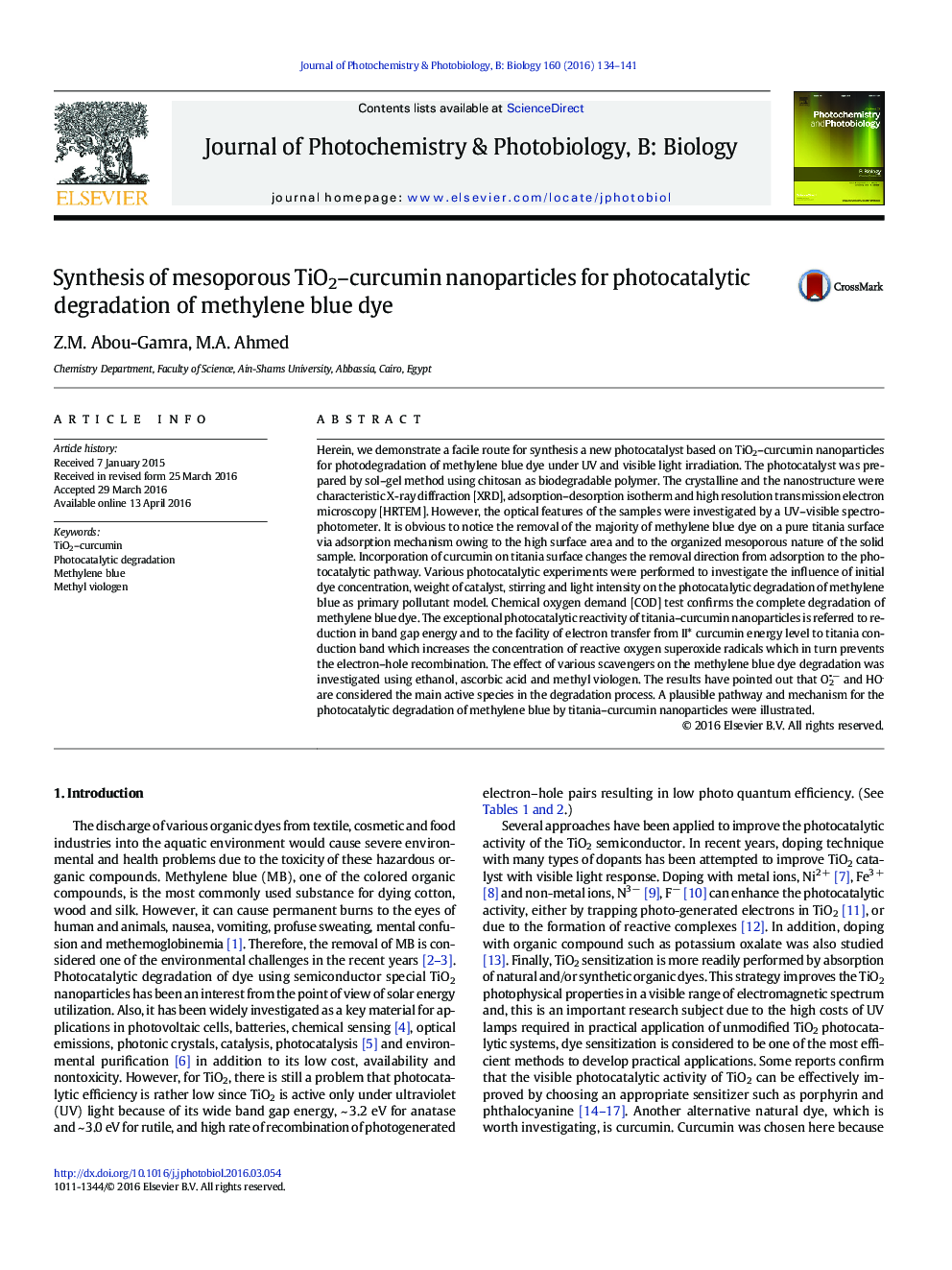| کد مقاله | کد نشریه | سال انتشار | مقاله انگلیسی | نسخه تمام متن |
|---|---|---|---|---|
| 29574 | 44422 | 2016 | 8 صفحه PDF | دانلود رایگان |

• TiO2-Curcumin nanoparticles were synthesized by sol-gel method
• Photophysical properties and determination of energy gap.
• Photocatalytic degradation of methylene blue with different types of titania
• COD results reflect the complete degradation of the dye
• The mechanism is suggested according to the effect of scavengers
Herein, we demonstrate a facile route for synthesis a new photocatalyst based on TiO2–curcumin nanoparticles for photodegradation of methylene blue dye under UV and visible light irradiation. The photocatalyst was prepared by sol–gel method using chitosan as biodegradable polymer. The crystalline and the nanostructure were characteristic X-ray diffraction [XRD], adsorption–desorption isotherm and high resolution transmission electron microscopy [HRTEM]. However, the optical features of the samples were investigated by a UV–visible spectrophotometer. It is obvious to notice the removal of the majority of methylene blue dye on a pure titania surface via adsorption mechanism owing to the high surface area and to the organized mesoporous nature of the solid sample. Incorporation of curcumin on titania surface changes the removal direction from adsorption to the photocatalytic pathway. Various photocatalytic experiments were performed to investigate the influence of initial dye concentration, weight of catalyst, stirring and light intensity on the photocatalytic degradation of methylene blue as primary pollutant model. Chemical oxygen demand [COD] test confirms the complete degradation of methylene blue dye. The exceptional photocatalytic reactivity of titania–curcumin nanoparticles is referred to reduction in band gap energy and to the facility of electron transfer from II* curcumin energy level to titania conduction band which increases the concentration of reactive oxygen superoxide radicals which in turn prevents the electron–hole recombination. The effect of various scavengers on the methylene blue dye degradation was investigated using ethanol, ascorbic acid and methyl viologen. The results have pointed out that O2− and HO. are considered the main active species in the degradation process. A plausible pathway and mechanism for the photocatalytic degradation of methylene blue by titania–curcumin nanoparticles were illustrated.
A successful photodegradation of methylene blue dye was performed over TiO2–curcumin nanoparticles Both hydroxyl and superoxide radicals are responsible for the dye degradation.Figure optionsDownload as PowerPoint slide
Journal: Journal of Photochemistry and Photobiology B: Biology - Volume 160, July 2016, Pages 134–141